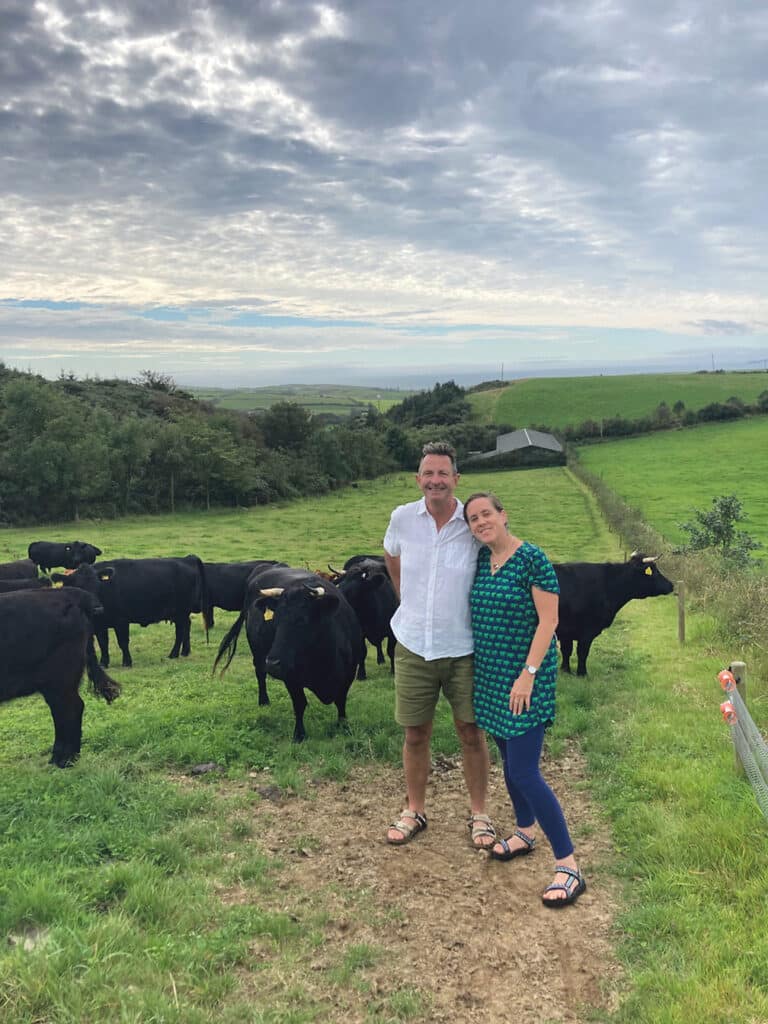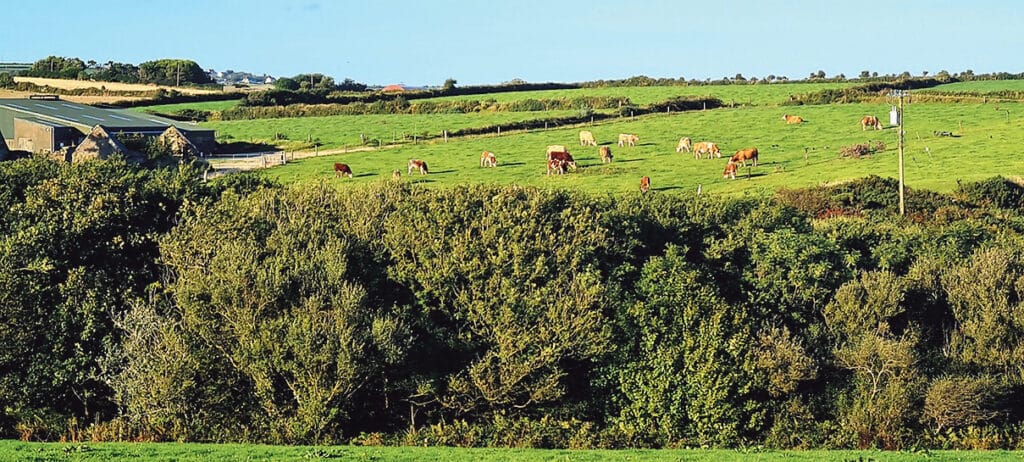A West Cork Farming Life: Victor Sprake and Deborah Ní Chaoimhe, Camus Farm, Ardield, Clonakilty
Tell us about Camus farm…what does it consist of?
We moved down from Kildare and bought the 30-acre farm here about 15 years ago and began converting it into an organic farm. We’re certified with the Irish Organic Association. There was a two-year conversion. We comply with all the Department of Agriculture rules regarding organic farming. Two thirds of it is in permanent pasture, which we reseeded when we came here. The seed mix wasn’t just rye grass – there’s about 12 different varieties that would have been used in most pastures in the past. This year we have an acre that is gone over to horticulture, which is supplying the spuds and the greens and salads into the restaurant now on the farm.
We also set about planting trees and hedges when we got here and the balance of the farm is planted at this stage. There were very few trees here when we arrived and we began planting Sitka spruce around some of the boundaries to act as a windbreak and shelter. Since then thousands of trees, all native species like Oak, Ash, Elm and Birch, and Blackthorn and Whitethorn hedging have been planted.

What inspired you to go down the organic route?
We were looking at bigger farms on our journey down from Kildare and all the small fields were done away with. It looked like in the direction that Irish farming was going, Ireland would soon be one big field. So we were trying to reverse that by going back to land with lots of hedges and smaller fields. You can say it is inefficient farming but the output of the land is not the only factor there.
We’re both from a mind-set of trying to live in harmony with nature rather than battle against it. The idea was always to have a place to share. That was one of my drivers for the hedges; so our kids get to experience what I did with nature when I was a child.
Hedge work is time consuming but it’s a beautiful thing. Skills such as hedge laying and fedging have been lost. We combine hedge planting and the use of electric fences to ensure the boundaries are stock proof. People love nature, you see it with Wally the Walrus or the starling murmuration in Timolegaue a few years ago – people are drawn to nature.
What does the cattle herd here consist of?
There are between 20 and 30 cattle, between Dexter cows and calves. It was an elderly neighbour who told us about the Dexters. They’re an Irish breed, and small, easy to manage, and light on the land, so it tied in with our organic farming ideals. I worked on a dairy farm in my teens so I had experience of dealing with livestock.
We don’t castrate and we don’t dehorn the cattle either. This year we have eight calves and the heifers are either all retained or sold as in-calf heifers. There’s a strong demand from other breeders for the heifers. All the males go to beef at two years or two-and-a-half years and they’re fed only on our species-rich meadows, so they would be different in that regard to most of the beef people would be familiar with. I began by selling the beef in the market in Clonakilty and sold it from home and now, with the restaurant open, it is sold there. So we don’t sell to the public directly anymore.
That leads neatly to the next question. How did the concept behind having a restaurant on farm come about?
The idea was simmering for a long time. We’ve run heritage craft workshops such as willow basket making here before and had some live music here in the past and the idea of a tearoom was discussed; it evolved from that. A restaurant rather than a small tearoom made sense when we had to meet all the building regulations to build something like this so we’ve now got a 120-seat restaurant ‘The Field Kitchen’.
Set among the trees, as restaurant locations go, the Field Kitchen setting is pretty spectacular. It’s like it’s enveloped in woodland. Has all the planting paid off and will it continue?
We created the location too, there is years of work gone into it and we’re still doing bits. What has become a family tradition here is to go out on St Stephen’s day and plant hedging. We probably plant 1,000 every year. When family and friends have visited, they have planted trees, and even the city slickers who come down always look out for what they planted. Every year you get more back because the hedge and trees are bigger. We’re really getting the reward back now for the effort put in. Between kitchen, garden and serving staff we have a staff of 17 working between full and part time positions over the summer.”
You’re certainly disproving the labour difficulties some sectors in Irish farming are experiencing. What are the challenges that could become opportunities for you?
We want to put organic goose on the menu for Christmas and would need approximately 100 organic geese but they’re not available; so for next year we’re open to suggestions. We’ll expand the horticulture area but beyond that the produce we use is local as well.



